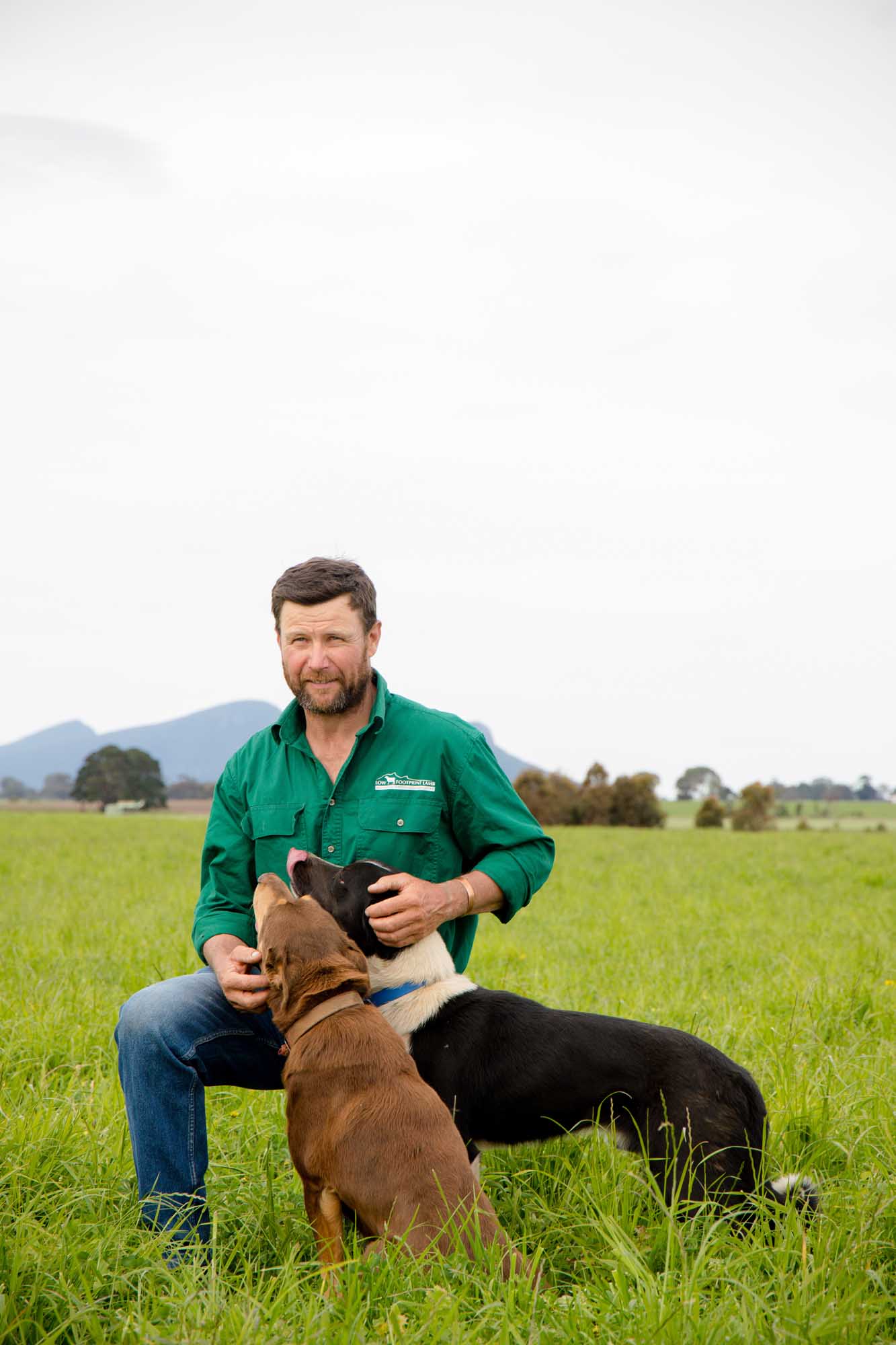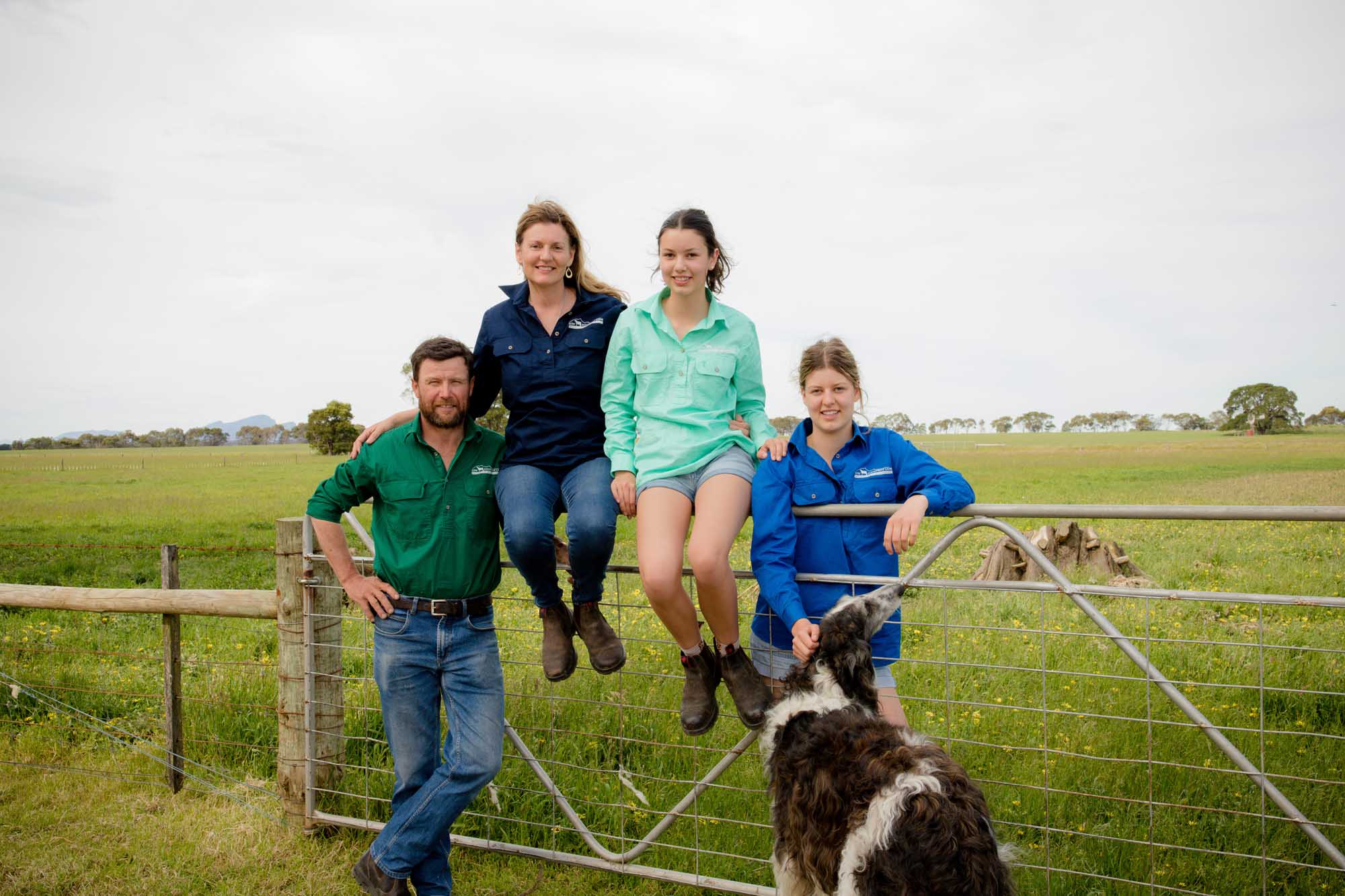We established our Low Footprint Lamb sheep flock in 2007, with grazing opportunities in Bluegum forests at Simpson and Condah. We initially ran Coopworth ewes and although these sheep were robust and productive, wool related management issues made them expensive to run in plantations. This motivated us to seek other breeds to better suit our business model.
We purchased a small number of Wiltipoll ewes in 2009 and a mob of Wiltshire Horn X White Dorpers in 2010. We bred rams from the better ewes and crossed them with our Coopworths. We also purchased rams from Cashmore Park’s newly established Nudie flock. Fortunately, these sheep were highly productive, allowing us to cull non-performers, as we built our flock to 2,000 ewes by 2015. That year we purchased a small farm at Croxton East, 15km east of Hamilton and now have a home base for our family and our flock, where we commenced performance recording the best of our ewes and rams.
We now have all historical information, linkages and performance data in Lambplan, at a level where our accuracies are good and our genetic selection is sharp.
Why ‘Low Footprint’ Lamb
Your ‘footprint’ simply means what you leave behind.
With no wool production, high worm and footrot resistance and positive genetic fat and muscle, our sheep require considerably less labour, have fewer health issues and have lower feed requirements, reducing business risks, costs and our overall ‘footprint’.
The term ‘low footprint’ has more recently been associated with carbon emissions. A low carbon footprint meat production system has high production per reproductive unit and per hectare. We’ve worked hard to increase our soil fertility and renovate our pastures, so we can successfully run 10 ewes per hectare.
We are also pushing genetics and management to increase weaning and growth rates reducing our methane output to meat production ratio. We rely on clover to extract nitrogen from the air and fix it into the soil to feed our pastures.
We are tracking our farm methane production and planting trees to lock up carbon, reduce wind speed and offer shade and shelter.
We are experimenting with producing Biochar from fallen timber in our plantations and will begin measuring individual animal methane output and selecting for low methane / high production animals in 2023.



